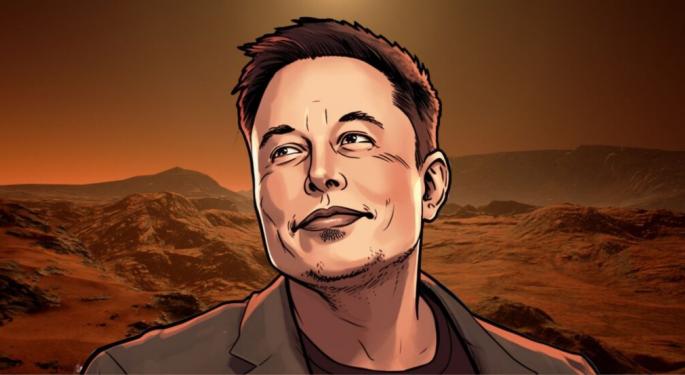SpaceX CEO Elon Musk Says Making Mars 'Self-Sustaining' Will Take Up To Half A Century, Will Require '10 Earth-Mars Transfer Windows'
SpaceX CEO Elon Musk said on Wednesday that making Mars self-sustaining or capable of supporting human life will take somewhere between 25-50 years. It is important to note that SpaceX has yet to make even an attempt to land humans on Mars.
What Happened: Musk has often talked about taking humans to the surface of the red planet.
Last year, he said that the first Starships will head to Mars in two years once the next Earth-Mars transfer window opens.
The first launches to Mars in 2026, Musk then said, will not have a crew onboard and will be aimed at testing the flight’s ability to land intact on Mars.
“If those landings go well, then the first crewed flights to Mars will be in 4 years,” Musk wrote, pegging the first crewed Starship flights to the neighboring planet for 2028.
Following landing humans on Mars, Musk envisions carrying enough cargo to the planet to enable it to sustain a human settlement.
“10 Earth-Mars transfer windows are needed to make Mars self-sustaining, ideally at least 20,” Musk said on Wednesday, pegging the time required to have a settlement on Mars to “1/4 to 1/2 century.”
According to the billionaire, humans stand a risk of extinction on Earth due to risks like nuclear war or natural annihilation.
“Having two planets means that all our eggs are not in one basket. From there, we can extend to other star systems,” Musk said on Wednesday.
SpaceX’s Starship launch vehicle, with which Musk envisions taking humans to Mars, is still in the testing and development phase.
NASA is eyeing landing humans back on the surface of the Moon after a gap of over 50 years with the help of a custom version of Starship as part of its Artemis program.
The latest flight test of Starship was in January. During the test, the vehicle booster landed back at the launch site after separation from its first stage. The spacecraft, however, disintegrated in space during the flight test. The spacecraft was carrying 10 Starlink simulators which were similar in size and weight to the company’s next-generation Starlink satellites as payload.
Check out more of Benzinga's Future Of Mobility coverage by following this link.
Read Next:
Photo courtesy: Shutterstock
© 2025 Benzinga.com. Benzinga does not provide investment advice. All rights reserved.



